#powys thomas
Text



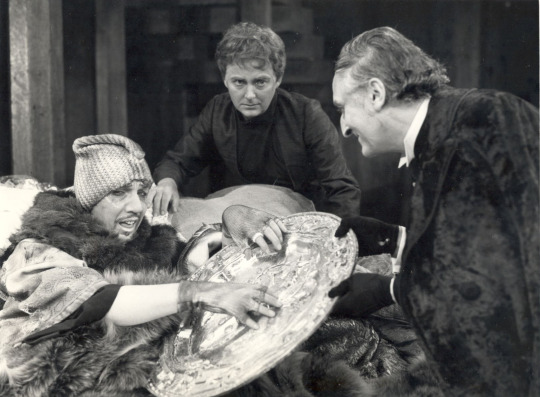

A Selection of DOUGLAS RAIN in VOLPONE
Stratford Festival, Stratford, Ontario, Canada, 19th annual season of Drama, June 7 to October 16, 1971, featuring Macbeth, Much Ado About Nothing, The Duchess of Malfi, Volpone, An Italian Straw Hat, and There's One in Every Marriage.
WILLIAM HUTT as Volpone
DOUGLAS RAIN as Mosca
POWYS THOMAS as Voltore
MERVYN BLAKE as Corbaccio
© Douglas Spillane. "The Festival" Photographer, Stratford, Ontario
#volpone (1971)#stratford festival#douglas rain#william hutt#powys thomas#mervyn blake#my scanner kind of demolished these because of all the pure black#but i also can't just take pictures because they're too shiny#so you get slightly scuffed versions instead rip#it said ''copyright photo. must be credited!'' on the back in case you're wondering why the photographer name is there#i love crediting people it's my favourite thing to do#thank you for your service mr spillane <3
7 notes
·
View notes
Text
On Friday 13th of October, three Palestine Action activists appeared in Mold Crown Court to issue their pleas, as they were charged with criminal damage relating to the closure of the Solvay Factory on Wrexham Industrial estate in November 2021.
The three defendants pleaded not guilty to the charges and will appear in Mold Crown Court before a jury on April 15th, 2024, for a 2-week trial.
The three men, including voice.wales journalist Mark Redfern, have been charged with criminal damage after allegedly causing thousands of pounds worth of damage to the Solvay factory.
They targeted the factory after it was revealed that the company supplies parts and adhesives that are used in Israeli drones that bombard and kill Palestinians living under the Israeli occupation.
The defendants, if found guilty, could face up to 12 months in prison for their protest.
Speaking to voice.wales, Mark stated: ‘These companies are making money hand over fist in the killing business. They’re only alright with it because it’s not their families cornered in Gaza, scared out of their wits. The cruel sods profiting from the bloodshed in Palestine going on right now operate in our towns and cities right under our noses.”
[...]
Owain Parry, another of the accused facing trial in Mold Crown Court, said that the extreme violence of the Israeli military demonstrates the need for people everywhere to act, “The war crimes of the Israeli government during the last 10 days committed against the Palestinian people has demonstrated the necessity for action to be taken now more than ever.”
“We cannot sit back and allow companies in the UK to play an active role in genocide. It is our duty as human beings to fight against oppression and for a free Palestine.”
Palestine Action have carried out direct protests in other areas of Wales as well, such as a Teledyne factory in Presteigne, Powys. The activists are currently serving sentences from 23 to 27 months in prison after being found guilty of criminal damage and accused of causing over a million pounds worth of damage to the American-owned factory.
The third accused activist, Thomas Bell, believes that despite the sentences that face them, it pales in comparison to the hardships that the Palestinian people endure every day, “Even the worst outcome for me, spending some time behind bars, is a fraction of the suffering the Palestinians go through every single day.”
“In the end, history will look back at these atrocities for what they are. With a clear head, I’ll be able to say I did something about it, can others say the same?”
71 notes
·
View notes
Text
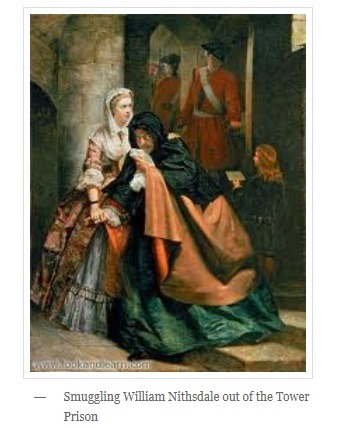
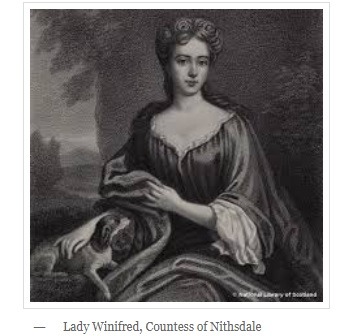
23rd February 1716 saw Lady Winifred Maxwell, Countess of Nithsdale, help her husband William escape from the Tower of London.
This is a great tale of a brave woman putting her own life on the line to help her husband escape.
Winifred Herbert was the daughter of William Herbert, 1st Marquess of Powis. Her parents accompanied James VII into exile in 1688 and her mother became governess of the young James Francis Edward Stuart, later to be known as the "Old Pretender". Winifred herself became a lady-in-waiting at the Jacobite Royal Court. On 2 March 1699, at the age of 27, she married William Maxwell, 5th Earl of Nithsdale, a member of a Scottish Catholic family.
The family returned home to Scotland in 1699 an settled back into life at their home at Terregles Castle near Dumfries. Maxwell worked hard to dispel suspicions of him in Scotland because of his Catholicism and his links with the Jacobites. However, he did come out in support of the Jacobites in the 1715 Uprising, and joined with the Northumbrian Jacobites under General Thomas Forster at Hexham. He was captured with other Jacobites at Preston and sent to the Tower of London. He was subsequently found guilt of treason the sentence was death and was to be carried out on February 24th 1716.
Winifred travelled to London to ask George I for clemency, but none was forthcoming. On the night of 23 February, the eve of the date set for her husband's execution, Winifred her maid, and two friends visited William at the Tower of London. Winifred distributed a generous amount of drinking money to the guards, and the women proceeded to come and go from William's cell, mingling with the wives of the guards and generally raising confusion about who was in the cell and who was not. Meanwhile, Winifred shaved William's beard and dressed him in spare women's clothing brought in for the purpose, including what has since become known as the "Nithsdale Cloak". William was then led from the Tower disguised as a woman by Winifred's maid, Evans, while Winifred herself covered the escape by carrying on a loud conversation with her - now departed - husband in an otherwise empty cell, before making good her own escape.
Winifred and William hid in London until he could be smuggled to France disguised as a servant of the Venetian Ambassador. Winifred herself then rode to Traquair House in Scotland to retrieve a number of family papers and arrange for their property to be cared for. She then, despite a huge search for her and her husband, returned to London, and traveled to the Continent. She eventually rejoined her husband at the exiled court of James Francis Edward Stuart in Rome. Winifred later became governess to Henry Benedict Stuart, the younger brother of Bonnie Prince Charlie
17 notes
·
View notes
Text
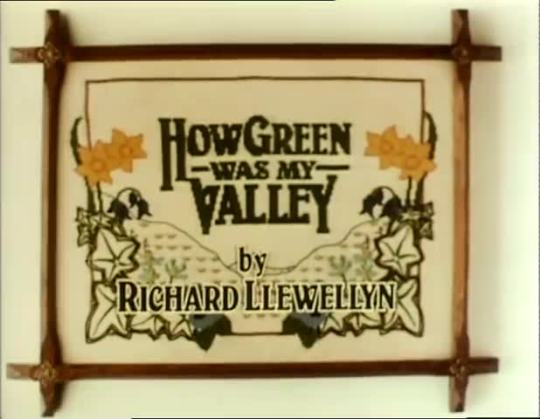

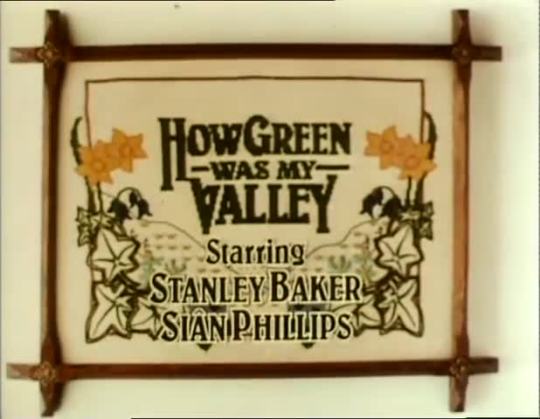
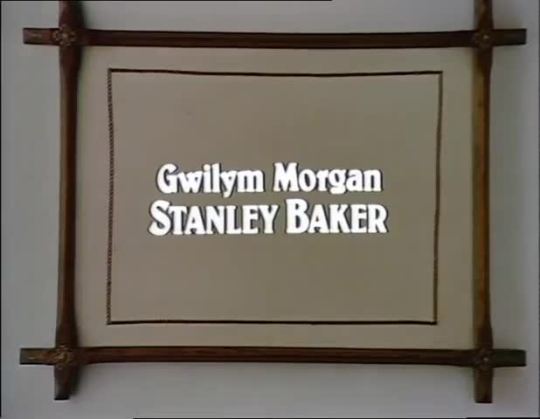
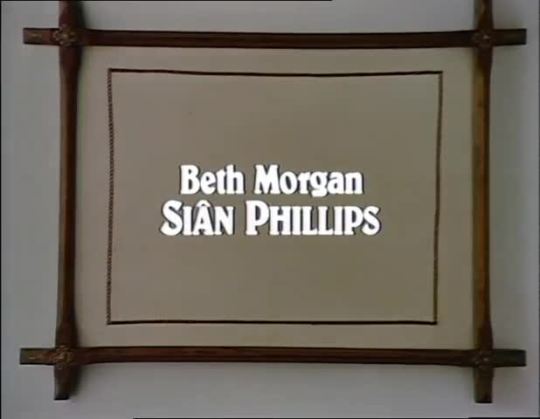
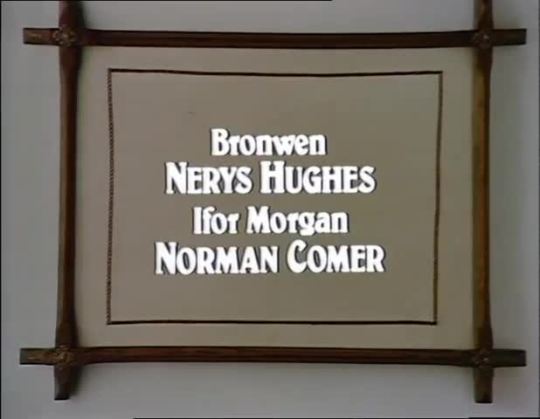


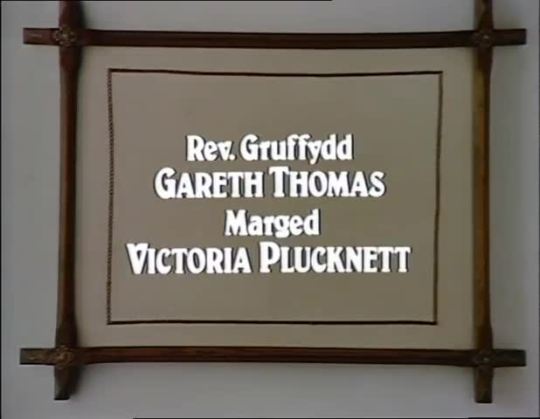

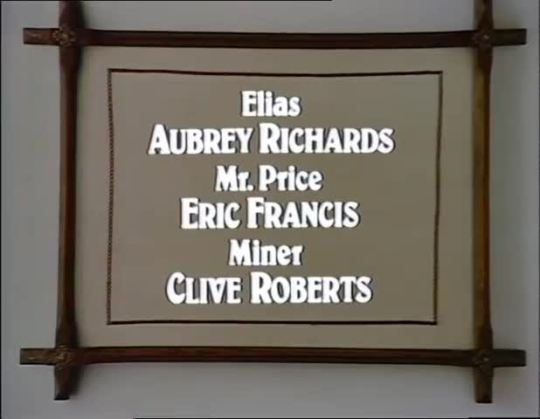
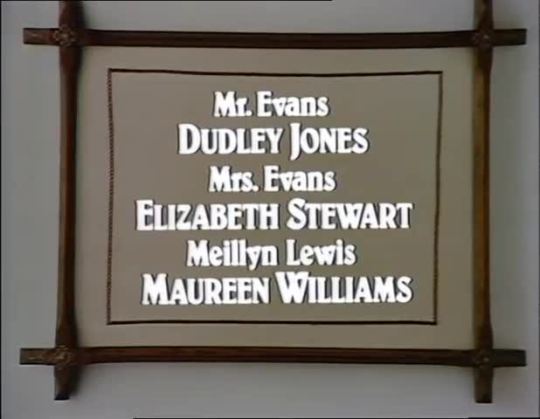
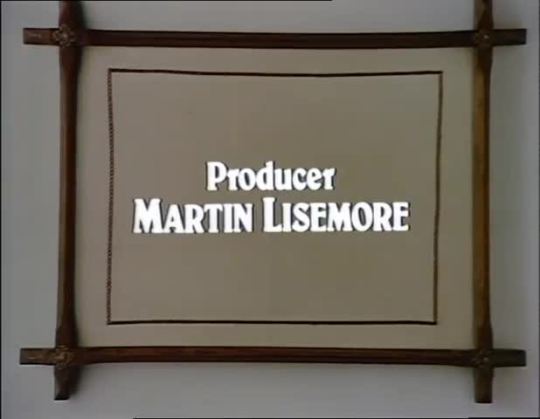

How Green Was My Valley - BBC Two - December 29, 1975 - February 2, 1976
Drama (6 Episodes)
Running Time: 60 minutes
Stars:
Stanley Baker as Gwilym Morgan
Siân Phillips as Beth Morgan
Dominic Guard as Huw Morgan
Rhys Powys as Young Huw Morgan
Nerys Hughes as Bronwen Morgan
Norman Comer as Ifor Morgan
Keith Drinkel as Ianto Morgan
Mike Gwilym as Owen Morgan
Sue Jones-Davies as Angharad Morgan
Gareth Thomas as Rev. Gruffydd
Sheila Ruskin as Blodwen Evans
Clifford Rose as Mr. Jonas
Aubrey Richards as Elias
John Clive as Cyfartha
Ray Smith as Dai Bando
#How Green Was My Valley#TV#BBC Two#Drama#1970's#Stanley Baker#Sian Phillips#Dominic Guard#Nerys Hughes#Norman Comer#Keith Drinkel#Mike GwilymSue Jones-Davies#Gareth Thomas
0 notes
Text
What did Llandaff, Cardiff's Dylan Thomas do to Brecon's William Bush?
William Bush of Brecon, Powys, Wales, United Kingdom has died. He was 23.
Bush is the son of John Bush, 61, an English teacher, and Elizabeth Bush. John and Elizabeth have another son named Alexander Bush and a daughter named Catrin Bush.
William worked as a surveyor with a commercial property firm. He loved rugby and golf.
In 2021, William moved into a house in Llandaff, Cardiff, Wales, which…

View On WordPress
0 notes
Text
Essay: Freiheit oder Sicherheit?
Vorwort: Dies ist ein Essay, den ich am 16.3.22 als Teil des PoWi-Unterrichts im Abitur verfasst habe. Der erste Entwurf war auch der einzige. Dementsprechend ist der Text nicht ganz up to par zu meinen eigentlichen und heutigen Standards. Dennoch - ich habe 17 von 18 Punkten bzw. 15 von 15 NP dafür bekommen, also wäre es mir zu schade, den Essay nur Staub sammeln zu lassen.
Gesellschaft. Bereits früh in der Menschheitsgeschichte wurde zwischen Freiheit und Sicherheit abgewägt.
Laut Oxford Languages ist Freiheit die Möglichkeit, sich frei und ungehindert zu bewegen. Absolute Freiheit ist wohl möglich, wenn man auf sich allein gestellt irgendwo im Wald lebt, aber erstrebenswert ist es nicht. Auf sich allein gestellt sein, bedeutet, Gefahr ausgesetzt zu sein, denn es gibt niemanden, der einem hilft, sollte einem etwas passieren, wie vielleicht eine Attacke durch ein wildes Tier. Zum einen lebt man also in ständiger Angst - und zum anderen sind wir Menschen einfach nicht dazu gemacht, allein zu sein. Wir sind Rudeltiere. So kommt es also, dass Menschen ständig unter ihresgleichen sind. Wo immer Menschen aufeinandertreffen und miteinander leben, müssen Kompromisse geschlossen werden.
"Der Mensch ist dem Mensch ein Wolf." Dieser Spruch wurde durch Thomas Hobbes bekannt.
Ob man dem nun zustimmt oder nicht; kaum lässt sich leugnen, dass es Regelungen und Gesetze dort braucht, wo Menschen interagieren. Fakt ist, dass Gesetze die Freiheit eines Menschen einschränken. Der große Vorteil ist dabei jedoch, dass jedem Mensch Sicherheit geboten wird.
Oxford Languages definiert Sicherheit unter anderem als "Geschütztseins vor Gefahr oder Schaden". Seit eh und je stellt sich die Frage, wie viel Freiheit man aufgeben sollte, um Sicherheit zu kriegen. Wobei es beispielsweise im Mittelalter nicht viel zu diskutieren gab: Bürger traten ihre Freiheit und Rechte ab und gaben dem König seine Legitimation und absolute Herrschaft und das war das. Ob sich daran in unserer heutigen Gesellschaft so viel verändert hat, kann ich nicht sagen - aber vielleicht muss sich auch nichts ändern (oder hätte sich ändern sollen). Wie allgemeinhin bekannt sein sollte, sind Menschen wirklich dumm. Falls es darüber jemals Zweifel gab, dann sollte die Schwurblerbewegung sie schon längst beseitigt haben.
Zum Wohle der Gesellschaft erscheint also das klare Überwiegen von Sicherheit über Freiheit erstrebenswert. Zugegeben, das große Problem hier ist, dass die Regierung auch aus Menschen besteht. Zumindest glaube ich das.
Nichtsdestotrotz: wir brauchen Autoritätspersonen. Die Regierung erfüllt eine wichtige Rolle; nämlich die der Eltern für Erwachsene, die nicht erwachsen sind. Schon in frühen Corona-Zeiten waren die Krankhäuser voll und trotzdem zeigten sich viele Corona-Leugner. Manche glauben gar, das Virus sei ein Instrument von Bill Gates und anderen "hohen Tieren", die Teil einer "neuen Weltordnung" sein sollen.
Sehen wir der Wahrheit also ins Gesicht: Manche Menschen muss man zu ihrem Glück zwingen. Außerdem schadet Dummheit leider vielen unschuldigen Leuten. Ein Schwurbler-Trottel kann Corona kriegen, ohne es zu merken, und eine arme Seele anstecken, die an dem Virus verreckt. Ziel einer Regierung ist es doch, gutes Verhalten in der Gesellschaft zu fördern und schlechtes zu verhindern oder zu bestrafen. Um das zu tun, muss man nun mal die Freiheit einiger Menschen einschränken.
Wer ein Stück Freiheit nicht für die Sicherheit aller aufgeben möchte, der kann ja gehen und im Wald leben.
0 notes
Text
Birthdays 8.13
Beer Birthdays
Arnulf of Metz (582 C.E.)
William Blackall Simonds (1761)
Anders Jöns Ångström (1814)
Charles Wells (1842)
Lilly Anheuser (1844)
William J. Lemp Jr. (1867)
Mark Carpenter (1943)
Dave Keene (1955)
Tom Nickel (1972)
Five Favorite Birthdays
Ben Hogan; golfer (1912)
Annie Oakley; sharpshooter (1860)
Philippe Petit; high-wire artist (1949)
George Shearing; jazz pianist (1919)
Felix Wankel; German engineer (1902)
Famous Birthdays
Felix Adler; ethics philosopher (1851)
Giovanni Agnelli, Italian businessman, founded Fiat (1866)
Anders Jöns Ångström; Swedish physicist (1814)
Benny Bailey; trumpet player (1925)
John Logie Baird; Scottish engineer, television inventor (1888)
Grace Bates; mathematician (1914)
Kathleen Battle; opera singer (1948)
Danny Bonaduce; actor (1959)
Neville Brand; actor (1920)
Jane Carr; English actress (1950)
Dave Carter; singer-songwriter and guitarist (1952)
Fidel Castro; Cuban dictator (1927)
William Caxton; English linguist, printer (1422)
Bobby Clarke; Philadelphia Flyers C (1949)
Will Clarke; author (1970)
Tom Cohen; philosopher (1953)
Dave "Baby" Cortez; R&B pianist, organist, and composer (1938)
Alex de Renzy; film director (1935)
Joycelyn Elders; admiral and physician (1933)
Dan Fogelberg; pop singer (1951)
Julius Freed; inventor, "Orange Julius" (1887)
James Gillray; English caricaturist (1756)
Paul Greengrass; English film director (1955)
George Grove; English musicologist and historian (1820)
Pat Harrington Jr.; actor (1929)
Alfred Hitchcock; film director (1899)
Don Ho; singer (1930)
John Ireland; English composer (1879)
Salomon Jadassohn; German composer (1831)
Bert Lahr; actor (1895)
George Luks; painter (1867)
Salvador Luria; Italian-American microbiologist (1912)
Bernard Manning; English comedian (1930)
Debi Mazar; actor (1964)
Jimmy McCracklin; blues/R&B singer-songwriter (1921)
Vladimir Odoyevsky; Russian philosopher (1803)
Tom Perrotta; novelist (1961)
Valerie Plame; CIA agent and author (1963)
Kevin Plank; businessman, founded Under Armour (1972)
Thomas Pogge; German philosopher (1953)
Llewelyn Powys; British writer (1884)
Gene Raymond; actor (1908)
Herb Ritts; photographer (1952)
Buddy Rogers; actor and musician (1904)
Frederick Sanger; English biochemist (1918)
John Slattery; actor (1962)
Goldwin Smith; English-Canadian historian (1823)
Lucy Stone; feminist, suffragist (1818)
Margaret Tafoya; Native American Pueblo potter (1904)
Regis Toomey; film director, actor (1898)
Richard Willstätter; German-Swiss chemist (1872)
0 notes
Text
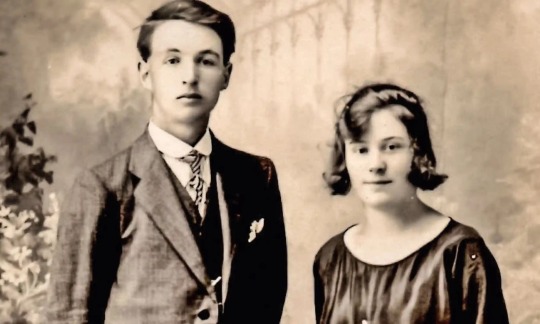
Griff and Patti Thomas photographed in the 1920s
‘The Killer Could Still Be Among Us’: Two Elderly Siblings and a Brutal Crime That Mystifies Locals, Nearly 50 Years On
In December 1976, Patti and Griff Thomas were found dead at their Welsh farmhouse. The police said it was a murder-suicide. But locals say the evidence doesn’t add up …
— Jenny Kleeman | Saturday 28th January 2023
The weathered headstones on the gently sloping hillside of Rhydwilym cemetery in Pembrokeshire, south-west Wales, are smothered in ivy and lichen, mostly long forgotten. But one among them is stark and unmissable, with bright gold lettering on sharp black granite. Martha Mary Thomas, whom everyone called Patti, and her older brother, Griffith Morris Thomas, known as Griff, lived together at the farmhouse of Ffynnon Samson, in nearby Llangolman. They died there together, on 7 December 1976, when Patti was 70 and Griff was 73. They are buried together, in the same grave. On the day I visit, someone has left a posy of pink flowers for them, flattened against the dark stone by the driving rain.
Neither Patti nor Griff had married. They remained at Ffynnon Samson, the Thomas family home, all their lives. Their father died in 1967, leaving them alone together when they were in their 60s. The farm had earned them a good living, but they lived frugally on their pensions, spending their time at Rhydwilym chapel, and looking after their garden.
At 8.45am on Saturday 11 December 1976, the postman, Gareth Rossiter, noticed the envelopes and packages he had delivered to Ffynnon Samson on Thursday and Friday were still lying behind the back door. He pushed it open to find the lights on and curtains drawn. He called out for the Thomases, but heard no reply. Then he saw Griff’s charred body on the floor of the kitchen, surrounded by burned cushions. Griff’s face was bloodstained. He was dressed in the remnants of a brown scarf and blue donkey jacket; a package of cheese from the local shop was still in his jacket pocket. Patti was dead on a chair in the far corner of the living room. The television was on but lay overturned at her feet. Patti’s head, face and clothes were soaked in blood.
Griff and Patti were buried together less than a month later, on 3 January 1977. The Home Office pathologist, Owen Williams, concluded on 24 January that Patti’s death had been caused by a severe head injury – a depressed fracture of the skull – sustained through a series of blows from a heavy blunt instrument. Griff, too, had a head injury, but Williams ruled that he’d died from his burns.
The next day, 25 January, detective chief superintendent Pat Molloy, head of Dyfed-Powys CID, closed his investigation. The scene at Ffynnon Samson was “… indicative of a sudden, unpredictable outburst of violence between the two deceased”, he wrote in his report to John Johnson, the Haverfordwest coroner, leaked to local journalists. “I consider that the possibility of a third party being involved is so remote as to lead me to the conclusion that Mr Thomas killed his sister and died in a fire started by himself.” At the inquest into the Thomas’s deaths on 17 February, the coroner’s jury found Griff responsible for Patti’s manslaughter, returning an open verdict on his death. For the local and national press, this was simply a murder-suicide.
Today, local people are campaigning to have Griff’s body exhumed from their shared Rhydwilym grave; not to separate him from the sister the authorities say he killed, but to exonerate him. In April 2022, a vigil for Griff and Patti drew at least 50 people to this graveyard in their memory.
Did a row between two siblings in their 70s who had lived together all their lives end in lethal violence – or did someone else get away with double murder at Ffynnon Samson? And nearly five decades on from the tragedy, without any spouses, children, grandchildren or other close family to fight for their name, why does Griff and Patti’s story still matter so much to the people of Pembrokeshire?
Like much of this part of Wales, Ffynnon Samson has changed significantly since 1976. It’s no longer a farm; the outhouses have been converted into cottages and sold in their own right. The two-storey grey stone farmhouse has changed hands several times, having been repurposed as a holiday cottage with glamping. Many of the properties around here are now second homes, bought by people who don’t spend much time in the community. A llama farm has opened next to Rhydwilym, offering tourists Instagrammable treks in the Cleddau valley with the animals. A family-run dairy farm nearby now sells artisan gelato as well as fresh milk. It is another world from the one Griff and Patti knew.
“They were old-fashioned. Set in their ways,” Hywel Vaughan, 63, tells me next to the log-burning stove in the home he shares with his parents, Dillwyn, 86, and Nelly, 83, near Llangolman. The Vaughans used to raise cattle on Griff and Patti’s land, renting about 18 acres in 1976. “We were on the opposite side of the road from the house. The spring had dried because of the very hot summer of 1976, so we had to cart water down there. We were seeing them quite often.”
“Griff was rheumatic,” Nelly says.
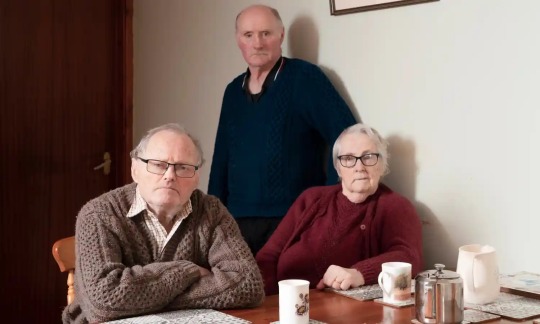
Hywel Vaughan (centre) with his parents Dillwyn and Nelly. The family used to raise cattle on Griff and Patti’s land. Photograph: Francesca Jones/The Guardian
“Stiff,” Hywel nods. “He was retired, but still pottering about, doing things, not much.”
“They were good people. Neighbourly,” Dillwyn remembers. “He was soft.”
“He treated the animals like his pets,” Nelly adds. She leans forward. “It was impossible. Impossible that he did it. That’s what’s troubling us, as a family. We can’t believe that he murdered her.”
“Didn’t he have cheese still in the pocket of his jacket?” Hywel asks. “He might have come home from the shop and stumbled across something.”
“No one would pass the farm unless he lived or had business in the area. The house would thus not be chanced upon (particularly in the dark, when their deaths must have occurred) by a would-be thief,” DCS Molloy wrote in his report to the coroner. (I found Ffynnon Samson easily; the farmhouse lies directly on the road between Llangolman and Rhydwilym). Molloy depicts Griff and Patti as an isolated, reclusive pair who rowed over money. “The general opinion that their relationship was harmonious must be viewed in the context that they lived in a detached house in a remote situation, 40 yards from their nearest neighbour. We are thus relying on what might have been merely outward appearances,” he continued. “A number of people who would not commit themselves in writing took a different view, namely that the couple quarrelled over money; Miss Thomas holding the reins and keeping her brother short.”
Molloy’s investigation is the product of a time before CCTV, mobile phone and DNA evidence, when policing relied on written records, local tip-offs and the instincts of experienced detectives. As such, his report is a mixture of keenly observed detail and hunches that look laughable today. He throws into doubt the possibility that a burglar killed the Thomases because dresser drawers were not left in disarray and the telephone cord was still connected: “Criminals who go to the homes of old, reputedly wealthy people to rob them will begin by ripping out the telephone wire.” But he is also able to determine that Griff and Patti died mid-evening on Tuesday 7 December, because Griff was last seen buying cheese at 4pm that day, failed to buy his usual paper on the morning of 8 December, and the plastic lens of the watch found on his body had melted, its hands fixed at 8.20. This maddening mix of precision and conjecture has made this widely circulated report notorious among local people.
Perhaps another product of its time – although one that arguably persists – is the depiction of Patti as a difficult woman, “rather short-tempered” and “the dominant partner”, who held the purse strings and may have “provoked” her brother into attacking her. A coin purse with a smear of blood was found on top of a dresser in the living room, “indicating that the purse had been handled during the fracas”. The only fingerprint on the purse was Griff’s. “I regard it as adding weight to the belief that no third party was involved,” Molloy wrote.
The Thomases had no one to spend their savings on but themselves. Like many people back then, they kept significant amounts of cash at home. The writing flap of the bureau in the room where Patti was found was left open, and the cash box in it was empty, but Molloy noted that £2,637.90 was found elsewhere at the property. Patti’s handbag had been left on the floor of her bedroom, containing a total of £543 in cash. If an outsider had come to Ffynnon Samson looking for money, they had left a lot behind.
But there are details in the report that do point to the presence of a visitor at Ffynnon Samson on the night Griff and Patti died. Two cups of barely sipped tea were found on the mantelpiece of the living room. A plate of bread and butter and some crisps had been left on a chair near the fireplace, with Patti’s fingerprints underneath the plate, as if she had brought in refreshments for a guest.
“At his age? With his demeanour? That amount of violence? Griff wouldn’t have been capable of it.”
Perhaps the most perplexing aspects of the report relate to the weapons used to inflict the injuries found on Griff and Patti. Molloy concluded that the blunt instrument that killed Patti was very likely to have been the oak dining chair found in the kitchen close to the living room door: Patti’s blood was all over one of its legs. A sewing machine found three feet from Griff’s head was “completely covered” with Griff’s blood – beneath its wooden cover. “One might wonder,” Molloy pondered, “what kind of intruder would take the trouble to replace the sewing machine cover.” But there is no mention of any of Patti’s blood being found on Griff’s body – or of Griff’s debilitating arthritis. Did Griff hurt himself with the sewing machine? Could 70-year-old Patti have battered her 74-year-old brother with it, before he lifted up a heavy chair and fractured her skull, then surrounded himself with cushions and set himself alight?
“However badly wrong went an attempted robbery, I feel sure we would have found a more easily understood scene,” he concluded. “While anything is possible, I am persuaded by all this that there is no evidence of an intruder bent on robbery.” With these words, Molloy used circumstantial evidence – and the lack of it – to pin Patti’s death on a man who could never protest his innocence.
“The old furniture they had back then was heavy, not like Ikea things today. At his age? With his demeanour? That amount of violence?” Hywel shakes his head. “Griff wouldn’t have been capable of it.” He shrugs. “And there are easier ways of ending your life.”
“Griff was riddled with arthritis. When you saw him in chapel, it was as much as he could do to turn the pages in the hymn book,” Denley Absalom, 69, tells me, from behind the open bonnet of a Peugeot. He runs the garage in Llangolman, like his father did before him. “Griff could just about drive a car or a tractor. To actually go and grab hold of things and lift them? No, no way.”
Griff and Patti were Denley’s cousins. “They were very quiet. Griff himself, very placid, afraid of his own shadow. Patti used to do a little bit of cooking. She used to collect things – needlework thimbles, or brooches.”

Denley Absalom. Griff and Patti were his cousins. Photograph: Francesca Jones/The Guardian
Molloy had considered whether relatives may have killed Griff and Patti in the hope of benefiting from their estates. “We traced 62 people who were related (in some cases only remotely) to the deceased. All male relatives between the ages of 15 and 50 were required to account for their movements during the material times.” He claimed that every house within a four- to five-mile radius of Ffynnon Samson was visited by police, and all males of the same age range interviewed. A blizzard of numbers in the report appears to back up the scale of this ambition: 1,260 people seen by the police, 572 men cleared by alibi, 156 statements taken.
“The police certainly didn’t interview me, or my uncle, who worked here as well, and was here every day,” Denley tells me. He remembers the incident room the police set up for a couple of months in the memorial hall at the top of the village. “To be quite honest with you, I think they were bored,” he tells me, with a sad grin. “They came down when father was here and bought a lot of ball bearings to play marbles with.”
Denley clearly wishes his parents were answering my questions. They died still troubled by the official version of events, he says. “If you knew Griff, it just feels totally wrong. The problem is, a lot of people of that generation have passed on, and there’s loads of new people moving into the area, who are not up with what happened.”
And there are questions that remain unanswered for Denley. What became of Griff and Patti’s dog, which disappeared around the time of the tragedy and was never mentioned in Molloy’s report? “It was a sheepdog, with eyes different colours, like David Bowie. He wasn’t quiet: if you turned up on their farmyard, he would yap and bark – they knew there was somebody about. If you drove past there, you’d see the dog.” He’s heard rumours that the dog was found in the farmyard well. And he’s heard things about footprints left in the snow that stretched from Ffynnon Samson across the valleys, that no one has ever explained. Again, he doesn’t know the details. “Still, it seems unusual that the dog just … disappeared.”
Everyone I speak to in Llangolman knows what was in Molloy’s report to the coroner. It jars with their memories of Griff and Patti, and their perception of the world as they knew it. In the pews of the 18th-century Baptist chapel at Rhydwilym, Denzil Davies, 67, tells me what it was like to work at Ffynnon Samson. “I went down there once a month to help Griff on the hay when I was about 15, 16. I was a keen haymaker, and it was such a different experience with Griff, because everything was at such a slow pace. He was a weakish person, I would say. Griff literally couldn’t lift a hay bale – he had to push it with his knee into place on to the trailer. He just couldn’t cope with it, really. After three layers of bales, he’d have to go in. That was laughable. You’d normally have 10.”
While Denzil says Griff was “very quiet”, he also describes him as “very sociable. In the shop, if I was being served before him, Griff would want to have a bit of a chat. He was always interested in what you were doing.” I ask if he thinks it’s fair to say that nobody really knew the Thomases. “Behind closed doors, nobody knows anybody,” he shrugs.
Eilir Davies, 81, grew up next door to Ffynnon Samson, and her family would sometimes be invited over for supper. “It would be bread and butter and a slice of ham – nothing elaborate. The front room was very spartan, really: hard chairs, no settees or anything like that.” Were they known to be wealthy people? “People knew they were well off,” she nods. “As a child, I remember, Patti didn’t stand any nonsense. You had to toe the line. She was bossy. She was the boss.” But the siblings seemed to get on with each other. “In the evenings, they used to sit in front of the fire with a newspaper, discussing whatever.”
“You’re in an area where people tend to accept what the police say has happened. But we’re still questioning it.”
Mon Davies knew Griff and Patti through chapel. (Mon, Eilir and Denzil share the same last name, but are not related.) “She used to help in the vestry with the teas and washing-up after communion. We had a big crowd back in those days. Patti used to sit by me and say, ‘Sut wyt ti?’, which is ‘How are you?’ in Welsh,” Mon remembers, nudging the space next to her on the pew. “She was sociable in chapel. Whenever I was here, she was here. I liked them as a pair.”
“I knew Patti and Griff very well,” Emyr Philips, 69, tells me. “I went to a chapel in the next valley across. Every year I arranged a trip from our chapel to all parts of the country – we went up to London for a day, and Liverpool. We went to Tenby every year in the summer. Griff always came.” Griff enjoyed himself, Emyr says, even though he didn’t say much and always sat near the back of the coach. Emyr knows how Patti is depicted in Molloy’s report. “Well, she wasn’t so domineering that she stopped him from going on the trips. She didn’t stop him from doing what he wanted to do,” he says.
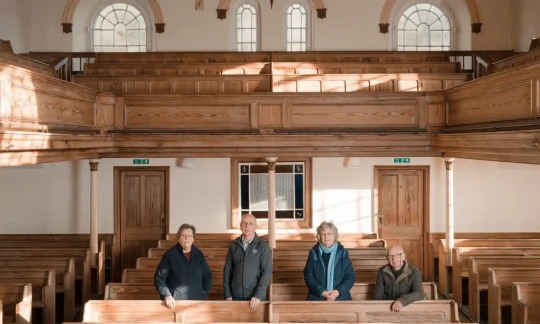
From left: Eilir Davies, Denzil Davies, Mon Davies and Emyr Philips in Rhydwilym chapel. They all doubt the official version of events. Photograph: Francesca Jones/The Guardian
It was Emyr’s job to collect the deposit for the coach trips. When he went to Ffynnon Samson, Griff retrieved the cash in full view of his young visitor; perhaps he was equally unguarded when others called at the house for money. “He took the deposit for the trip from a drawer in a glass cabinet. So there could have been money all over the place,” he tells me, his eyes wide. Just because more than £2,500 in cash was found in Ffynnon Samson, it doesn’t mean more money couldn’t have been stolen.
“At the time, I don’t think anybody really believed that Griff had done it,” Emyr says. “Especially in the circumstances in which he was found – it doesn’t make much sense at all.” Did people question the police’s decision? “Not enough,” he replies. “You should understand that you’re in an area where people tend to accept what the police says has happened. But we’re still questioning it. Even more these days, because we know that with DNA, there’s much more scope for finding out the truth. And what has kicked everybody on is the TV programme, The Pembrokeshire Murders.”
Emyr is talking about a 2021 ITV true crime miniseries on the crimes of John Cooper, a farm worker who was convicted after a 2011 cold case review of DNA evidence of two unsolved double murders. On 22 December 1985, Cooper murdered brother and sister Richard and Helen Thomas, both in their 50s, in their three-storey farmhouse at Scoveston Park near Milford Haven, 40 minutes’ drive from Llangolman. Detectives believe he targeted the property because he thought only Helen was home; when Richard discovered the burglary, Cooper shot them both, before setting fire to the house. Three and a half years later, he shot Pete and Gwenda Dixon after intercepting them on the Pembrokeshire coastal path near Little Haven and stealing their bank cards.
“My view is that there is some information that this same man was in this area, doing some fencing,” Emyr says.
“I heard that, too,” nods Eilir.
“Even with the big changes we’ve seen with people moving into the area, I think that people who were born here would like it to be solved,“ Emyr continues. “It matters because of the closeness of the Welsh-speaking community. We would like peace of mind that Griff was free from charge.”
“To think that Griff was called a lunatic and a murderer – it’s disgusting,” Mon says.
“The guilty person could be among us, couldn’t he? He could be walking around with us,” says Eilir. “As we’re getting older, we want possibly more answers.”
Emyr nods. “And we as a community are getting smaller. It will be too late soon.”
The miniseries on Cooper’s crimes may have sparked renewed interest in the Ffynnon Samson case, but the campaign to exonerate Griff exists because of Hefin Wyn, 72, editor of the Welsh-language monthly neighbourhood paper, Clebran. He organised the vigil last spring, and has been my guide on my visit to Pembrokeshire.
“We want to reopen the inquest and clear Griff’s name. That’s the main objective,” he tells me as he drives us through the winding roads out of Llangolman. “We have barristers on standby to fight the case if necessary.”
Hefin never knew the Thomases. He grew up on the other side of the Preseli mountains north of Llangolman, and was working as a journalist in Cardiff at the time of their deaths. “When I retired, I decided I didn’t want to play golf or bridge or whatever. I wanted to help out.” He moved back to the area, writing books on local history and running Clebran on a voluntary basis. Hefin has been following leads on Ffynnon Samson since 2006. “Clebran” means “chatter” in Welsh, and it is chatter – or rather gossip – that Hefin has to contend with as he tries to get to the truth of what may have happened.
Nothing supports the claim that Cooper could have been doing farm work in this part of Pembrokeshire in 1976. “It’s all right for everyone to say, ‘People say Cooper was around here.’ But who are those people?” he says, making broad arm gestures as he steers through the narrow lanes. “If somebody told me, ‘Yes, we remember him working on so and so’s farm,’ I’d go along and talk to the son of that farmer. That would be different.” The connection with Cooper seems at the moment to be nothing beyond similarities to the Scoveston murder. “But I’m open to being convinced otherwise,” he adds. (This view is backed up by senior police officers who investigated Cooper. Aldwyn Jones, retired deputy head of CID at Dyfed-Powys police at the time of Cooper’s arrest, tells me: “There is not a shred of evidence that linked Cooper to that area, or even a suggestion that he knew where Ffynnon Samson was.”)
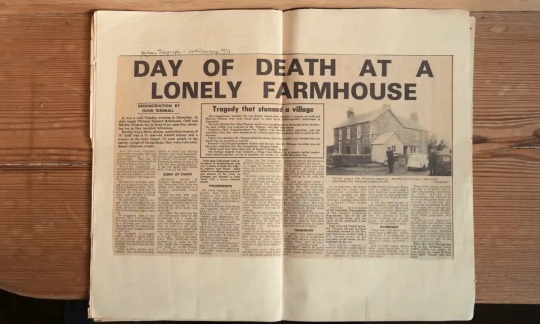
A newspaper clipping about the deaths. Photograph: Francesca Jones/The Guardian
For Hefin, the report to the coroner shows how Molloy – who was born in County Cork in Ireland, grew up in England, and spoke no Welsh – did not understand the way of life here. That’s how he could depict Griff and Patti as isolated recluses. “They were mainstays in the chapel. And in those days, social life turned around chapel activities. Molloy didn’t seem to appreciate that,” he pauses. “I’m surprised that somebody from his background ever became head of CID in Dyfed-Powys. In those days, it was a very Welsh-speaking area.”
Molloy arrived at Dyfed-Powys a hero in 1972. He’d just secured the conviction of Raymond Leslie Morris – who murdered three girls in Cannock Chase in the late 1960s – later writing a book about the case. It was the first of several high-profile successes for Molloy, whose record catching murderers and drug smugglers was so illustrious that the term “Molloy’s luck” was coined within the force. He retired in 1983, and died in 2003.
Confronted with a complex, baffling crime scene at Ffynnon Samson and not wanting to risk an unsolved case on his watch, could Molloy have picked the path of least resistance by blaming Griff? Hefin thinks so. “He wanted early closure, and he wanted a clean sheet. And since there were no close family – sons, daughters, etc – to question his decision, he got away with it.”
Hefin has his own theory. “I was thinking of a third person having gone there. He wanted to borrow money, possibly. He was local, using the many paths down there at the time. They knew each other. He had a cup of tea. He was desperate to have some money. Patti refused, things went haywire. That’s a very plausible explanation, I think.”
Eurfyl Evans was a junior detective in December 1976, promoted from the village bobby only the year before. “My boss at the time was Pat Molloy, who as far as I was concerned was one of the best detectives around,” he tells me over the phone from his home in west Wales. “I worked with him from then until he retired. I was part of his team on all the murders that he was on. I idolised the man.”
When it came to his version of events at Ffynnon Samson, Molloy often had to reassure the Welsh-speaking members of his team, Eurfyl tells me. “He justified it to us, a few times, over a pint. Quite a few of his detectives did say, ‘We’re having a lot of flak about this.’ He gave an answer, but it did create, and still does create a feeling of, was justice done?”
There are several elements of the case that still trouble Eurfyl. “One or two of the first persons who went there in the morning – not the postman – said they saw footprints in and around the house, in the ground frost. It was always rankling in my mind. If there was no third party, there wouldn’t have been any footprints. It wasn’t chased up with those witnesses – whether they are still alive, I don’t know.” Then there’s Griff’s head injury. “How would he sustain it? In all probability, he would not have an injury to his head inflicted by his sister. It’s hard to believe that point. So how did he get it? Pat Molloy’s reasoning – that after starting the fire he must have got excited by something and did something and injured his head – well, that’s vague. That’s so airy-fairy.”
But the young Eurfyl Evans was dazzled by this star detective, and his famous unblotted copybook. “He was so methodical, so good. I would have believed anything he said because he was a brilliant boss and an ace detective. The whole time he was in Dyfed-Powys, he did not have one undetected murder. So you could see why his team would be ever so loyal to his way of thinking.”
Does he think that this might be one occasion where Molloy could have got it wrong? Can he be truly confident in the conclusion Molloy reached at Ffynnon Samson? Eurfyl pauses. “I have to have an open mind. But in hindsight, after all these years, it’s got to be doubtful.”
“We will explore whether modern techniques can shed further light on the events at Ffynnon Samson in 1976.” — Det Supt Paul Jones
For years, Dyfed-Powys refused to reopen the case, stating there was “no intention to reinvestigate any incidents on speculation alone”. But, on 18 October 2022, it announced Operation Hallam, a review of the exhibits they still hold from Ffynnon Samson. Items taken from the scene at the time include the bloodstained dining chair, the sewing machine and its cover, as well as samples of blood and hair from Griff and Patti. If the presence of a third party’s DNA is found on the suspected murder weapons, this could throw Molloy’s conclusions into doubt. But the police have not revealed which items remain in storage from the original investigation. In a statement, Det Supt Paul Jones said: “While the investigation at the time in 1976 was thorough, the forensic science was limited compared with today, and we will explore whether modern techniques can shed further light on the events at Ffynnon Samson in 1976.”
“It means that they’ve bowed to the pressure,” Hefin says. “I think it has a lot to do with the recent appointment of a new chief constable who happens to be from west Wales and Welsh-speaking, who understands the area.” It’s striking that the police made a point of describing the original investigation as “thorough”, I say. “They’ve always said that,” Hefin replies. Whenever anyone has questioned Molloy’s work, the force has been defensive, he says.
In a cafe on the outskirts of Haverfordwest, Hefin introduces me to Hayley Wood, a paralegal who read about the campaign two years ago in the Western Telegraph and is now working with him to get the inquest into Griff’s death reopened.

Campaigners Hefin Wyn (left) and Hayley Wood by the siblings’ grave. Photograph: Francesca Jones/The Guardian
“The police told us that if it was investigated on today’s standards, it may have been a different outcome. I don’t think that the standards of the day were actually put in place,” Hayley says. Whatever Operation Hallam finds, Hefin and Hayley will seek to get the inquest reopened, but they have to wait for the police’s conclusions before they approach the coroner. So far, all three political representatives for the local area (Stephen Crabb MP and Cefin Campbell and Paul Davies, members of the Senedd) have backed calls to reopen the inquest.
Hayley’s analysis of Molloy’s report, the inquest report, newspaper cuttings and interviews with local people have convinced her that the original verdict is unsafe. There’s the lack of any mention of blood spatter of Patti on Griff (“he would have been covered in her blood”), the fact that their estates show Griff left more money than Patti and therefore would have no need to go begging to her, the disappearance of the sheepdog, the omission of Griff’s arthritis, and the apparent exaggeration of how many people were interviewed by police, among a host of other serious issues.
“The inquest took about six weeks – done and dusted. Griff and Patti weren’t represented legally, nor were the family. I’ve covered inquests that can take three or four years. It doesn’t sit right,” she says. “Within two or three days, before anything had come back from forensics, the press were being told it was a murder-suicide.” The leaks meant the public would be more willing to accept a conclusion that couldn’t be disproved because the key witnesses were dead, and also shut down discussion of other versions of events, and other evidence coming forward.
Hayley has written up her findings in a document that runs to more than 9,000 words. She’s freelance; none of this work has been paid. Even though Hayley has been living in the area for 35 years, she was born in Wolverhampton; the campaign to exonerate Griff is being driven by people who never knew him and weren’t living in the local community when he died. Why does this case matter so much to them both?
“I do it because I care about my community, and injustice. The police got it so wrong. How often have they got it wrong?” Hayley replies. “That community has never been allowed to grieve for their friends and their family. That sticks in my mind.”
“It’s not necessarily a matter of finding the culprit, it’s a matter of clearing Griff Thomas’s name”
Many convictions based on hunches and circumstantial evidence have been overturned in the light of modern forensic techniques. A string of high-profile murder convictions were quashed in the 1990s, once DNA evidence became available in appeals. In Wales, Lynette White’s killer remained at large for 15 years until he was caught through DNA evidence in 2003: three men had been wrongly convicted of her murder in Cardiff in 1988, and served two years in prison before they were cleared. The killer of Sandra Phillips, murdered in Swansea in 1985, is still unknown; two brothers spent six years in prison for her murder before their convictions were overturned.
But even cases that result in a miscarriage of justice involve a trial; no case for Griff’s defence was made in a criminal court, or to the coroner. Even if Operation Hallam finds that Molloy got it right, Griff never got a chance to defend himself. It is this sense of injustice that refuses to die among the community here.
“It’s not necessarily a matter of finding the culprit, it’s a matter of clearing Griff Thomas’s name, because he seemed to be a genuine person. Since the strength of local feeling is so strong as well, one must do one’s utmost to ensure justice,” Hefin tells me. “Once we succeed – and we will succeed – I think I will feel that I own a piece of the earth around here. The earth in Llangolman will sleep easier, or more quietly, because justice has been done.”
0 notes
Note
where could you see kennedy mcmann fitting?
( elyse zollern ), the ( emma rigby ) fc would like a ( younger sibling <30 ) with ( toby regbo, hunter king, cameron porras, fc utp ). the mun ( REQUIRES ) you to contact THEM before applying. [ prince/princess of prussia ]
( gwendolen powys ), the ( alycia debnam-carey ) fc would like a ( younger sibling <25 ) with ( katherine langford, danielle rose russell, mitchell hope, any suitable fc ). the mun ( doesn’t require ) you to contact them before applying. [ prince/ss of wales ]
( sten glücksburg ), the ( evan roderick ) fc would like a ( short-term ex [22-30] ) with ( utp ). the mun ( doesn’t require ) you to contact them before applying. [ title utp ]
( maximilian grünenberg ), the ( bill skarsgard ) fc would like ( his younger siblings [ 24-30 ] ) with ( freddy carter, thomas doherty, hero finnes tiffin, herman tømmeraas, kristine froseth, someone who fits the vibe ). the mun ( requires ) you to read THIS or contact THEM before applying. [ prince/ss of switzerland ]

1 note
·
View note
Photo

You may think that the reality is boring: there's no dragons, levitation, interstellar travel or lightsabers. For a while I was obsessed with the idea of creating a perfect virtual reality game, visually exiting and with big self improvement benefits. And then I thought, "Maybe I am already playing one?" Maybe Donald D. Hoffman is right in his "Case Against Reality" and we may just not see what is out here because we didn't evolve that way. If the reality is a self improvement virtual reality game, as Thomas Campbell suggested, maybe very visually exiting stuff like dragons would distract us from the main objective? And sometimes I think there's already pretty wild stuff around us, very reminiscent of what you can find in sci-fi and fantasy stories. Places of power, telepathy, past lives, visions, synchronicity, powerful psychics... And if some people remind us dragons, maybe we just can't see their giant leathery wings, flapping somewhere in another dimension? #artwork #linandara #universe #magic #chamanic #spiral #art #reality #layersofexistence (at Newtown and Llanllwchaiarn, Powys) https://www.instagram.com/p/CguCKGzNaon/?igshid=NGJjMDIxMWI=
0 notes
Photo
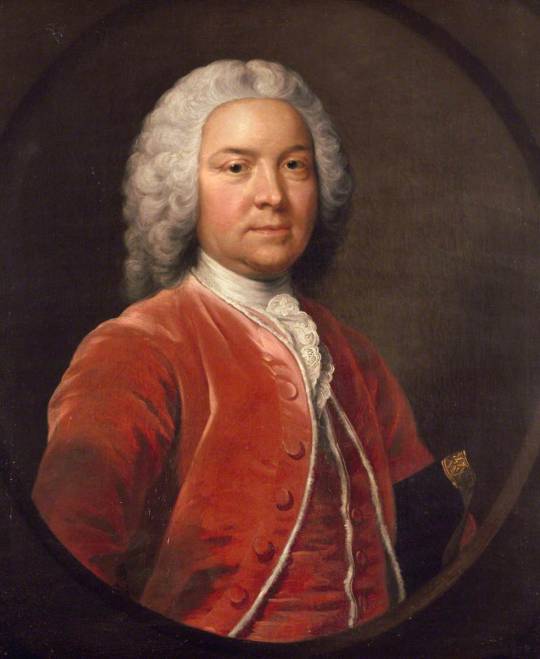
ab. 1740 Attributed to Thomas Hudson - Henry Arthur Herbert, 1st Earl of Powis
(Powis Castle)
47 notes
·
View notes
Text
To be nameless in worthy deeds exceeds an infamous history. The Canaanite woman lives more happily without a name than Herodias with one. And who had not rather have been the good thief than Pilate?
But the iniquity of oblivion blindly scatters her poppy and deals with the memory of men without distinction to merit of perpetuity. Who can but pity the founder of the pyramids? Herostratus lives that burned the Temple of Diana; he is almost lost that built it. Time has spared the epitaph of Adrian’s horse, confounded that of himself. In vain we compute our felicities by the advantage of our good names, since bad have equal durations, and Thersites is like to live as long as Agamemnon. Who knows whether the best of men be known, or whether there be not more remarkable persons forgot than any that stand remembered in the known account of time?
from Hydriotaphia, Urn Burial, or, a Discourse of the Sepulchral Urns lately found in Norfolk, by Sir Thomas Browne
Urn Burial has been admired by Charles Lamb, Samuel Johnson, John Cowper Powys, James Joyce, Jorge Luis Borges, Derek Walcott, Herman Melville (who called Browne "a cracked archangel"), and George Saintsbury, who called it "the longest piece, perhaps, of absolutely sublime rhetoric to be found in the prose literature of the world".
5 notes
·
View notes
Photo
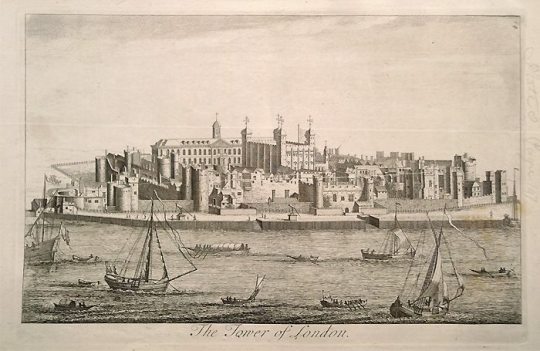
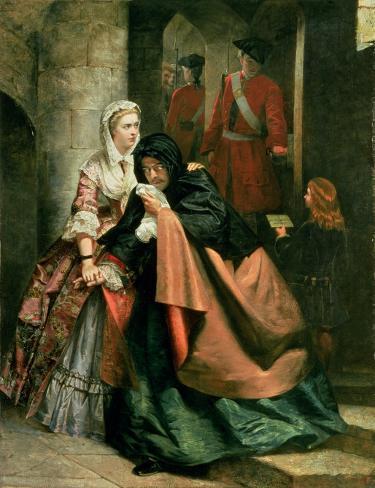

23rd February 1716 saw Lady Winifred Maxwell, Countess of Nithsdale, help her husband William escape from the Tower of London.
A cool wee tale of bravery and a strong Scottish woman putting herself in danger to save her husband.
Winifred Herbert was the daughter of William Herbert, 1st Marquess of Powis. Her parents accompanied James VII into exile in 1688 and her mother became governess of the young James Francis Edward Stuart, later to be known as the “Old Pretender”. Winifred herself became a lady-in-waiting at the Jacobite Royal Court. On 2 nd March 1699, at the age of 27, she married William Maxwell, 5th Earl of Nithsdale, a member of a Scottish Jacobite family.
The family returned home to Scotland in 1699 an settled back into life at their home at Terregles Castle near Dumfries. Maxwell worked hard to dispel suspicions of him in Scotland because of his Catholicism and his links with the Jacobites. However, he did come out in support of the Jacobites in the 1715 Uprising, and joined with the Northumbrian Jacobites under General Thomas Forster at Hexham. He was captured with others at Preston and sent to the Tower of London. He was subsequently found guilty of treason the sentence was death and was to be carried out on February 24th 1716.
Winifred travelled to London to ask George I for clemency, but none was forthcoming. On the night of 23rd February, the eve of the date set for her husband’s execution, Winifred her maid, and two friends visited William at the Tower of London. Winifred distributed a generous amount of drinking money to the guards, and the women proceeded to come and go from William’s cell, mingling with the wives of the guards and generally raising confusion about who was in the cell and who was not. Meanwhile, Winifred shaved William’s beard and dressed him in spare women’s clothing brought in for the purpose, including what has since become known as the “Nithsdale Cloak”. William was then led from the Tower disguised as a woman by Winifred’s maid, Evans, while Winifred herself covered the escape by carrying on a loud conversation with her - now departed - husband in an otherwise empty cell, before making good her own escape.
Winifred and William hid in London until he could be smuggled to France disguised as a servant of the Venetian Ambassador. She herself then rode to Traquair House in the Scottish Borders to retrieve a number of family papers and arrange for their property to be cared for. She then, despite a huge search for her and her husband, returned to London, and travelled to the Continent where she eventually re-joined her husband at the exiled court of James Francis Edward Stuart in Rome.
Winifred later became governess to Henry Benedict Stuart, the younger brother of Bonnie Prince Charlie.
The day after the escape William Gordon, 6th Viscount of Kenmure and James Radclyffe, 3rd Earl of Derwentwater met there end, look out for more on this tomorrow, and a beautiful wee Jacobite song from the Corries called Derwentwater’s Farewell
13 notes
·
View notes
Text
MILES OF GLOUCESTER
1st Earl of Hereford
(born unknown date - died 1143)
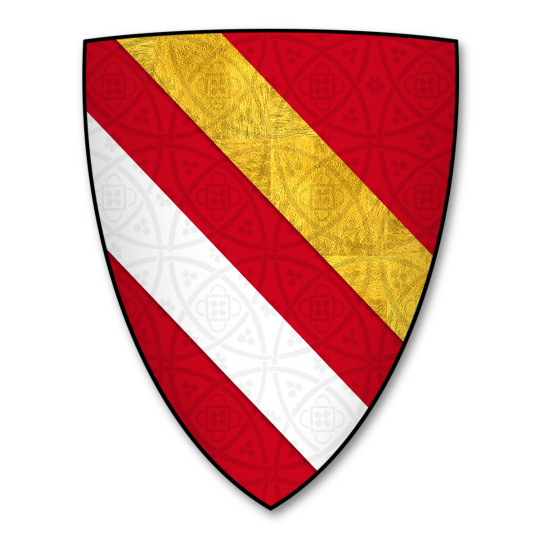
pictured above is the Earl of Hereford's coat of arms, as there are no known portraits depicting him
-------------------- ~ -------------------- ~ --------------------
SERIES - Descendants of the Kings of the Britons: Miles was married to a great-granddaughter of Gruffudd ap Llywelyn, King of Gwynedd and Powys, considered to have been King of the Britons in the 11th century.
-------------------- ~ -------------------- ~ --------------------
MILES was born in an unknow date, probably in England. His parents were Walter of Gloucester, Hereditary Sheriff of Gloucestershire (of Anglo-Norman origins) and his wife Bertha. He was named MILES FITZWALTER, meaning Miles son of Walter.
Around 1121 Henri I, King of England arranged Miles' marriage to SYBILLE and they had at least eight children. She was of Cambro-Norman (half Welsh, half Norman) origins as her parents were the Norman Bernard de Neufmarché, Lord of Brecknock and the Cambro-Norman Nest/Agnes FitzOsbern.
When his father-in-law died in 1125 his brother-in-law Mahel was disinherited and Brecknock passed to his wife. So he ruled in her name as LORD OF BRECKNOCK in the Welsh border.
Around 1126 he succeeded his father as HEREDITARY SHERIFF OF GLOUCESTERSHIRE and was also appointed CONSTABLE OF ENGLAND by King Henri I.
By 1135 Étienne de Blois, the new King of England sought for the allegiance of many important nobles including the Lord of Brecknock and appointed him CONSTABLE OF GLOUCESTER CASTLE.
But his support to the new King did not took long. By 1139 he changed sides in the English Civil War (known today as the Anarchy) and recognized Princess Mathilde of England as the rightful English Sovereign. As she was the only surviving child and heiress of the late King Henri I and was rivaling the authority of her cousin King Étienne. She was also known as Empress Mathilde because her late husband had been Holy Roman Emperor Heinrich V.
As he was supporting Princess Mathilde, King Étienne removed him of the Constable office, and in 1141 she, as the new Lady of the English, created him EARL OF HEREFORD, the fifth creation of the title.
In 1143 he was excommunicated by Robert de Bethune, Bishop of Hereford because he invaded Church lands.
The first Earl of Hereford's death is recorded to have happened on Christmas Eve of 1143, though the place was not recorded.
-------------------- ~ -------------------- ~ --------------------
His eldest son Roger FitzMiles succeeded as the second Earl of Hereford and Lord of Brecknock. But when his son died childless in 1155 the Earldom became extinct. It was only recreated by Jean, King of England around 1199/1200 to Henri de Bohun, a great-grandson of the first Earl of Hereford.
After his eldest son's death the territories of Brecknock and Hereditary offices passed to his other sons. However, all of them also died childless and the territories ended up divided between his female descendants from the de Bohun, de Braose and FitzHerbert families.
Until 1373 all Constables of England were his descendants, given the title was Hereditary. Three of his sons and eight members of the de Bohun family held the office until it passed to Prince Thomas (of Woodstock) of England, one of the sons of Édouard III, King of England, who married a de Bohun girl.
Through his daughters he is an ancestor of many British Monarchs, including:
the Lancastrian Kings of England;
the Tudor Monarchs of England; and
all subsequent Monarchs of England, Great Britain and the United Kingdom, to this day.
-------------------- ~ -------------------- ~ --------------------
Check MILES' connections to the Kings of the Britons!
In a span of four generations MILES was related to the Kings of the Britons through his wife…
His wife was Sybille de Neufmarché, Lady of Brecknock.
Her mother was Nest/Agnes fitzOsbern.
Her grandmother was Nest ferch Gruffydd.
Her great-grandfather was Gruffudd ap Llywelyn, King of Gwynedd and Powys - a King of the Britons in the 11th century.
#miles of gloucester#earl of hereford#english royalty#english nobility#british royals#british nobility#royals#royalty#monarchy#monarchies#royal history#english history#welsh history#british history#european history#world history#history#history lover#12th century#medieval wales#middle ages#henry i#king stephen#empress matilda#history with laura
3 notes
·
View notes
Photo

Ce que nous pensons résolument, consciemment, constamment que nous sommes, nous tendons à le devenir. Car le monde n'est pas un produit fini, c'est un flux créateur ; et ce qui est connu sous l'espèce de l'évolution, c'est la création répétée de myriades de volontés autocréatrices.
L'intelligence grégaire est une intelligence qui entrave l'évolution. Comme une fourmilière, malgré toute son animation, c'est une "mainmorte" sur la pente ascendante de la vie. Quand poètes et prophètes ont à moitié créé, à moitié révélé les Dieux, c'est dans leur solitude que cet acte fut accompli. Ne pas devenir fourmilière, mais participer à la solitude des Dieux, voilà l'authentique idéal de l'homme et de la femme ; et le plus faible, le plus dégradé, le plus stupide d'entre nous peut acquérir cette divine capacité.
Il y a cela dans le monde qui soulève un nuage de poussière, de brouillard, d'épais tortillons de laine étouffante, entre la réceptivité créatrice de l'âme et les éléments primordiaux de l'univers. Cette poussière, ce brouillard, cette vague de chaleur, cette vapeur laineuse, chaude, collante, adhésive, sont la projection simultanée de l'âme grégaire. Il n'y a que lorsque l'âme est seule que la magie de l'univers puisse traverser cette épaisseur.
Il faut le silence au murmure des longs siècles pour se faire entendre, au mystère de la procession cosmique pour se faire sentir. Et ce silence peut s'atteindre dans le plus dément tohu-bohu de la plus populeuse cité. Bruits matériels, rugissements des choses matérielles ne peuvent venir l'interrompre.
La vie est pleine de Présences Mystérieuses qui vont et viennent ; Présences qui sont à la semblance des Dieux. Mais ces Présences ne peuvent être rattrapées dans leur voyage aérien que par des esprits qui ont appris le secret de la solitude.
Converser avec les Dieux exige que l'on se fasse pareil aux Dieux ; cela implique de cultiver sa solitude. Là où "deux ou trois sont rassemblés" les Dieux prennent le large !
— John Cowper Powys (Une philosophie de la solitude, 1933)
photo : Grant Thomas, 2019
2 notes
·
View notes
Audio
(artichoketrust)
Track Listing:
The Cap and Bells, William Butler Yeats
Performed by Fiona Shaw
Sonnet 129, William Shakespeare
Performed by Cliff Burnett
Adam's Curse, William Butler Yeats
Performed by Jonathan Pryce
The Bait, John Donne
Performed by Cliff Burnett, Giles King
I Am No Good At Love, Noel Coward
© NC Aventales, with thanks to The Noel Coward Archive Trust - https://www.noelcoward.com
Performed by Angela Lansbury
To His Mistress Going to Bed, John Donne
Performed by Annie Freud, Cillian Murphy
The Canonization, John Donne
Performed by Ioan Gruffudd
Dover Beach, Matthew Arnold
Performed by Eileen Atkins
The Wave, Virginia Woolf
Performed by Fiona Shaw
Ar Lan y Môr, Traditional
Performed by Ioan Gruffudd
A Mermaid, William Butler Yeats
Performed by Giles King
The Good Morrow, John Donne
Performed by Jonathan Pryce
She Moved Through the Fair, Traditional
Performed by Robin Robertson
Scarborough Fair, Traditional
Performed by Alun Armstrong
The Frog Prince, Stevie Smith
Extract taken from ‘The Frog Prince’, Copyright Stevie Smith, first appeared in Collected Poems and Drawings of Stevie Smith by Stevie Smith. Reproduced by permission of Faber & Faber Ltd.
Performed by Fiona Shaw
Death is Smaller Than I Thought, Adrian Mitchell
Performed by Jonathan Pryce
O Do Not Love Too Long, William Butler Yeats
Performed by Giles King
She Tells Her Love While Half Asleep, Robert Graves
Performed by Anne Marie Duff
Cosmology, Michael Symmons Roberts
Performed by Michael Symmons Roberts
Anne Hathaway, Carol Ann Duffy
Anne Hathaway, Copywright © Carol Ann Duffy. Reproduced with permission of the Licensor through PLSclear
Performed by Harriet Walter
For Love (quote from Orlando), Virginia Woolf
Performed by Fiona Shaw
Lovesong, Ted Hughes
Extract taken from ‘Lovesong’, Copyright Ted Hughes, first appeared in Crow by Ted Hughes. Reproduced by permission of Faber & Faber Ltd.
Performed by Ted Hughes
Donal Og, Isabella Augusta, Lady Gregory
Performed by Fiona Shaw, Aine O Ceallaigh
Prayer, Carol Ann Duffy
‘Prayer’ from Mean Time by Carol Ann Duffy. Published by Anvil Press, 1993. Copyright © Carol Ann Duffy. Reproduced by permission of the author c/o Rogers, Coleridge & White Ltd., 20 Powis Mews, London W11 1JN
Performed by Philippa Wilson
Holy Island, Andrew Motion
‘Holy Island’ from THE CUSTOM HOUSE by Andrew Motion© Andrew Motion, 2012. All Rights Reserved.
Performed by Andrew Motion
Sonnet 116, William Shakespeare
Performed by Eileen Atkins
The Voice, Thomas Hardy
Performed by Bill Paterson
Poem 4, Samuel Becket
Performed by Fiona Shaw
Counting the Beats, Robert Graves
Performed by Fiona Shaw, Ioan Gruffudd
The Hug, Thom Gunn
Extract taken from ‘The Hug’, Copyright Thom Gunn, first appeared in The Man with Night Sweats by Thom Gunn. Reproduced by permission of Faber & Faber Ltd.
Performed by Paddy O Kane
When You are Old and Grey, William Butler Yeats
Performed by Fiona Shaw, Edna O Brien
Into My Arms, Nick Cave
Copyright © Nick Cave. Used by kind permission of the artist and Mute Song Ltd Antony Harwood
Performed by AL Kennedy, Stephen Coates
5 notes
·
View notes